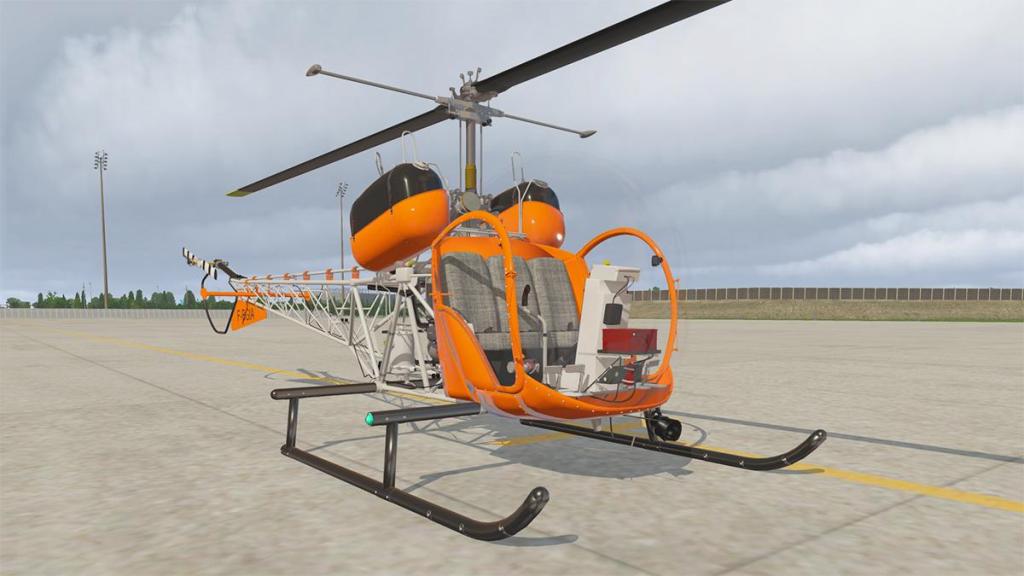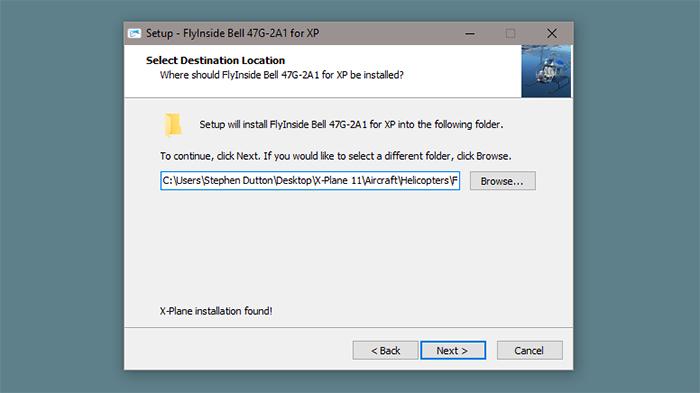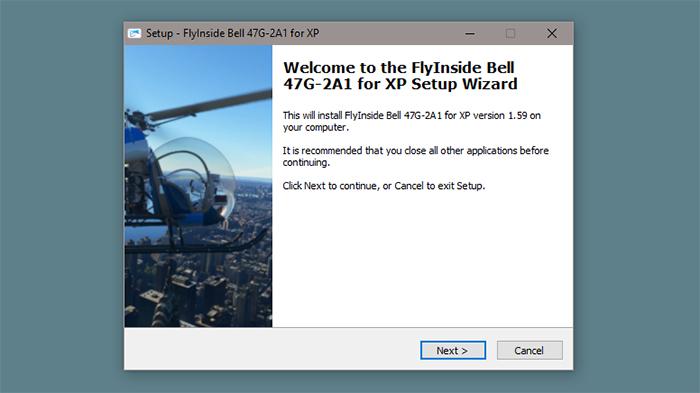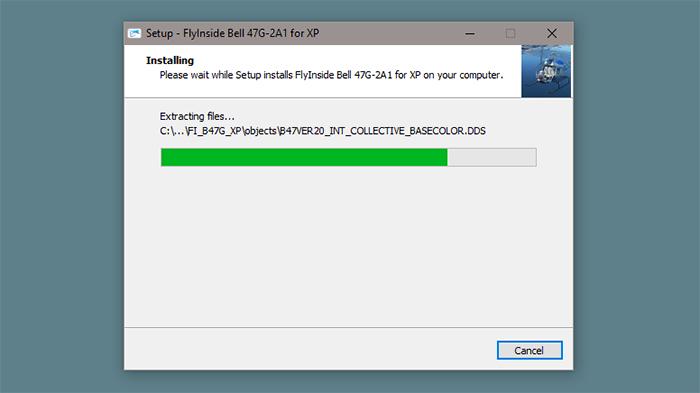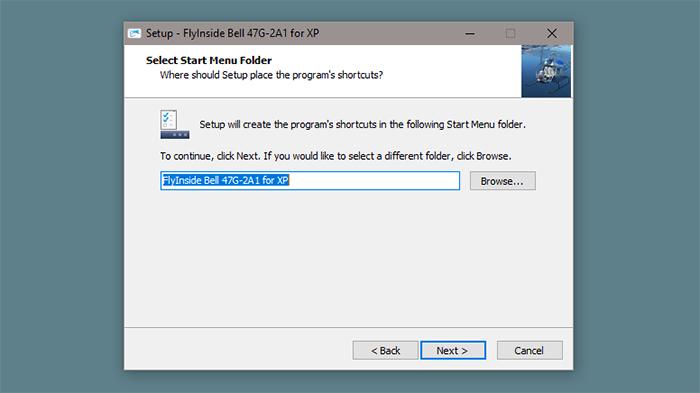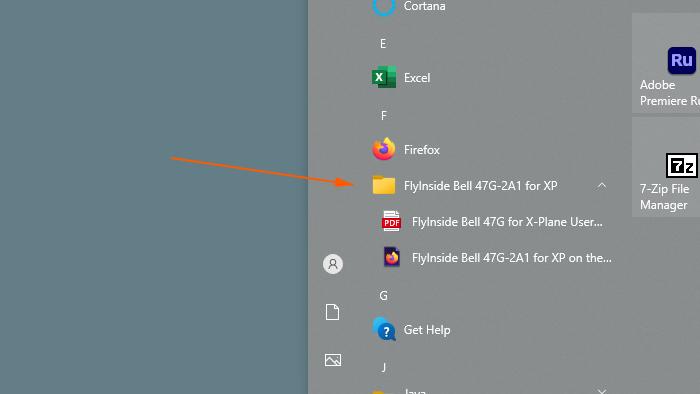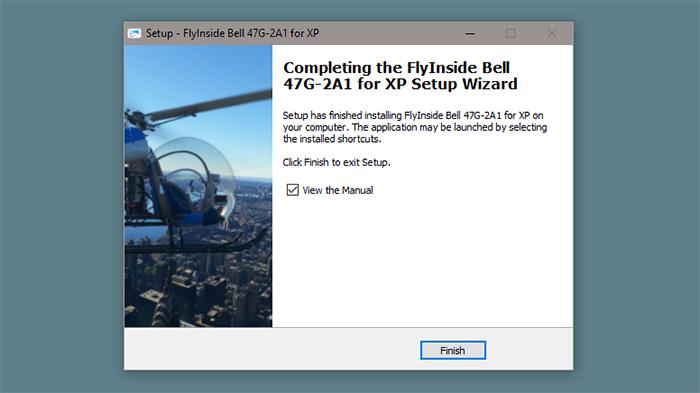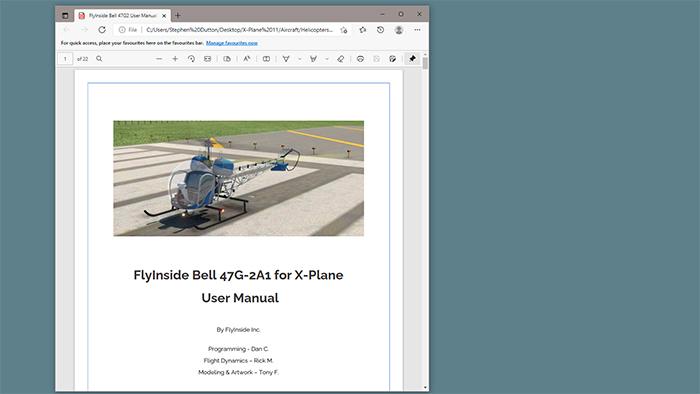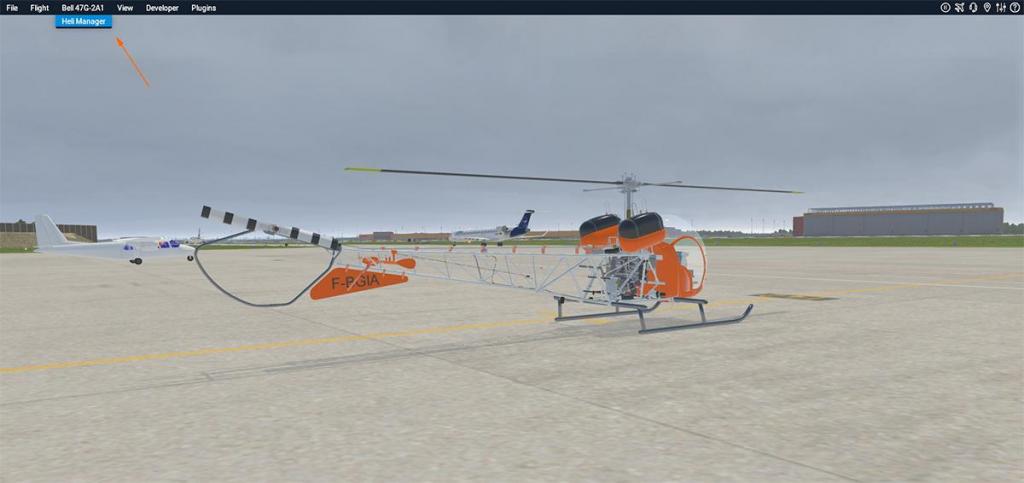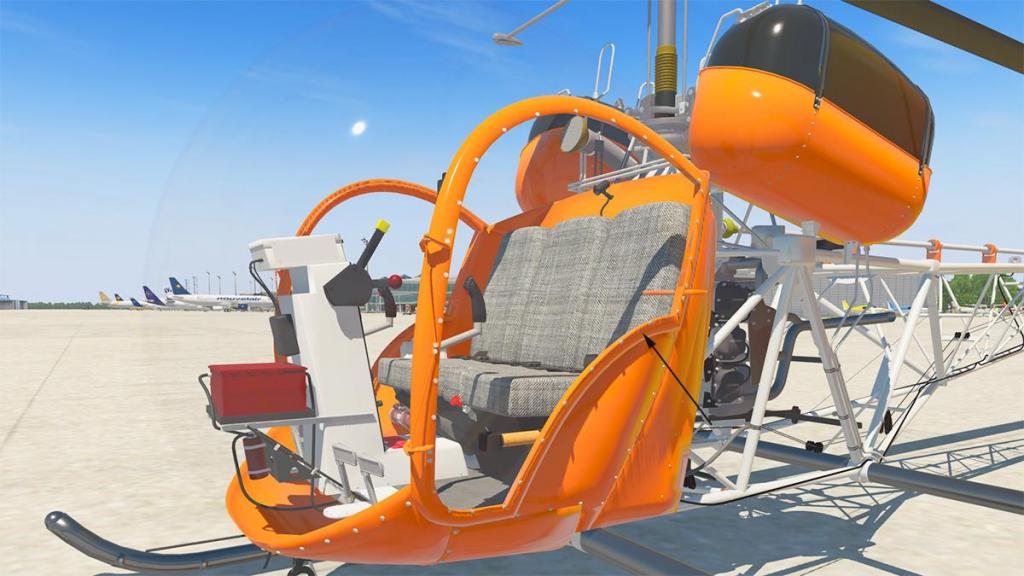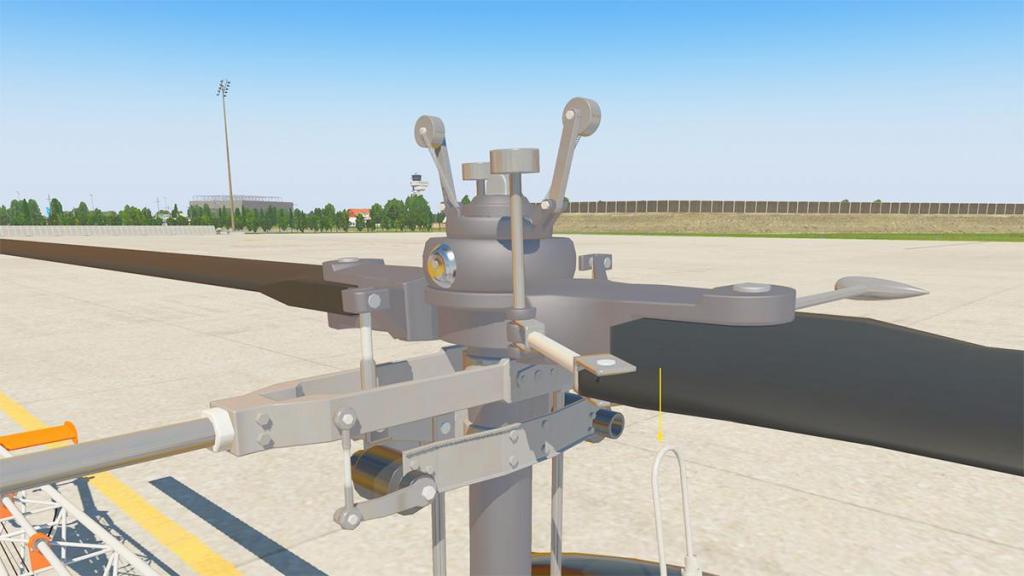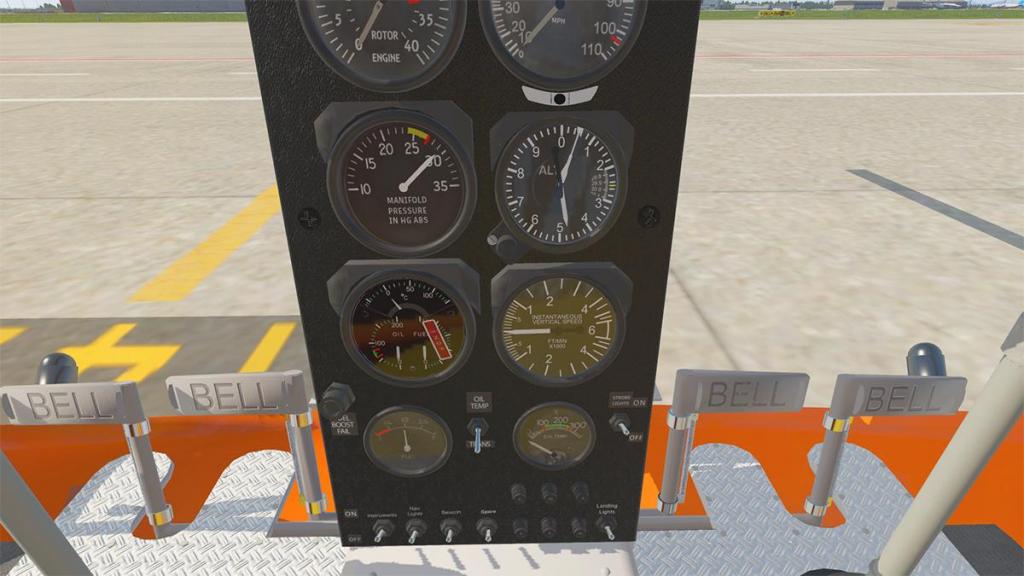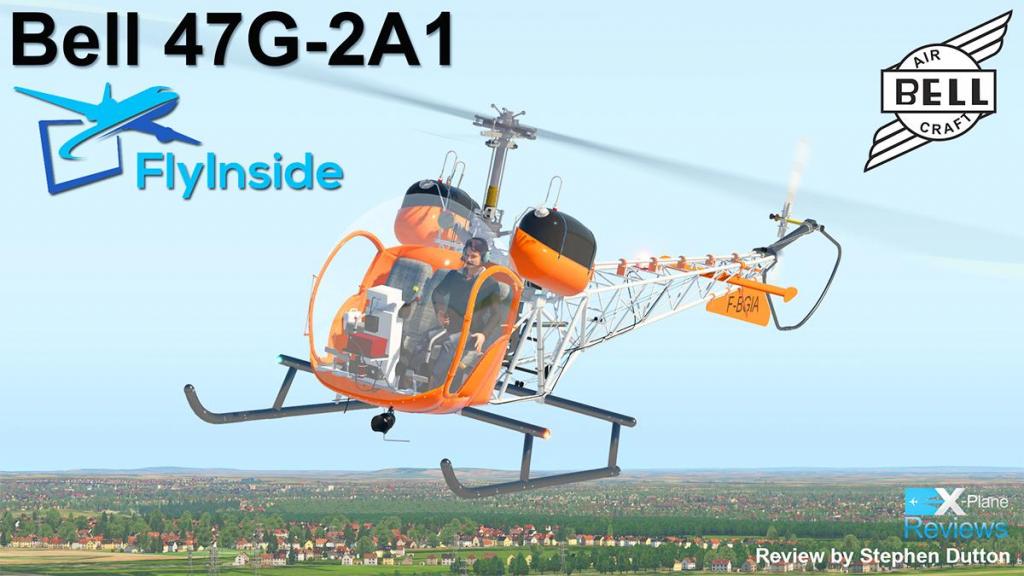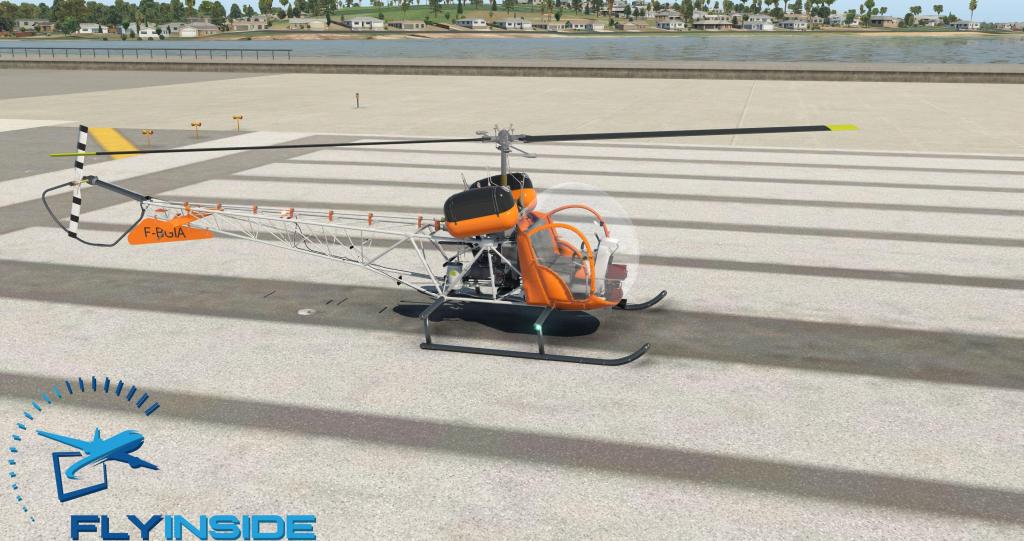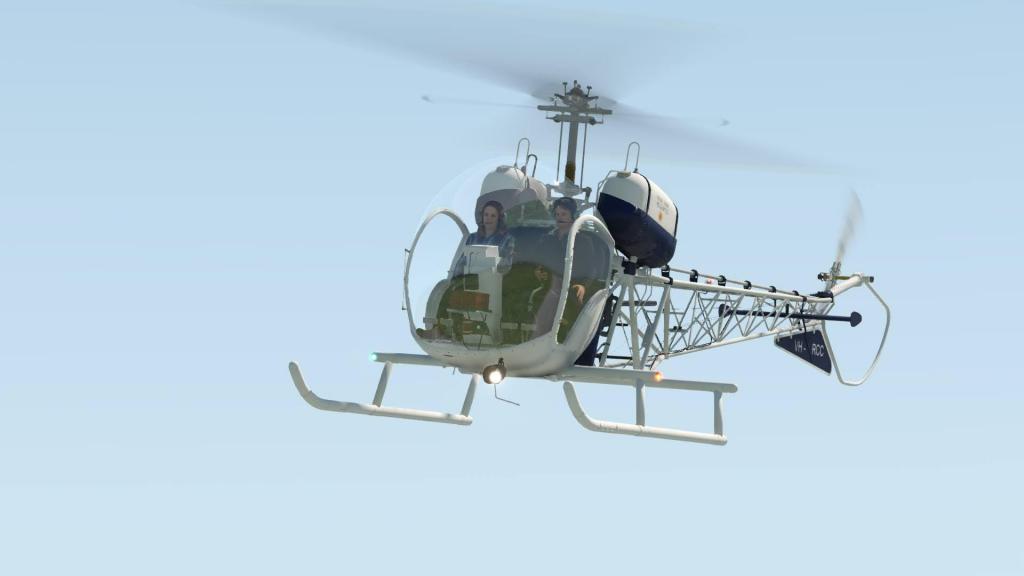Search the Community
Showing results for tags 'flyinside'.
-
Aircraft Review : Bell 47G-2A1 by FlyInside Through early morning fog I see Visions of the things to be The pains that are withheld for me I realize and I can see That suicide is painless It brings on many changes And I can take or leave it if I please The above lyrics are actually related to a Helicopter, a very famous one, in fact the silhouette of the machine signified the category that is covered by Vertical Takeoff aircraft. The song is "Suicide is Painless" from the film M*A*S*H by director Robert Altman, and the subsequent American Television Show that ran for seemingly decades but actually only for one (1972 - 1983). The Bell 47 is a twin-rotor, single-engined light helicopter manufactured by Bell Helicopter. It was based on the third Bell 30 prototype, which was the company's first helicopter designed by Arthur M. Young. The 47 became the first helicopter certified for civilian use on 8 March 1946. The 47G introduced in 1953, can be recognized by the full "soap bubble" canopy, exposed welded-tube tail boom, saddle fuel tanks and skid landing gear, in also creating that famous iconic silhouette of what a helicopter design and it's layout is. Basically the machine is turned inside out so you can see all the bits that make it work. Note the aircraft in M*A*SH was the military 47G version in the Bell H-13 Sioux helicopter. Engines are either Franklin or Lycoming that are vertically mounted piston engines of 178 to 305 HP (150 to 230 kW) positioned directly behind the bubble cockpit. Seating varied from two (early 47s and the later G-5A) to four (the J and KH-4). There is no notice on the engine version, but as this is a 47G version, so I will go for the Lycoming VO-435 engine producing 240 hp (179 kW). This engine was produced under license by Westland Aircraft as the Sioux for the UK military. The 47G-2A-1 version also had the wider cabin, improved rotor blades and increased fuel capacity. First flight was December 8, 1945, and the aircraft was produced between 1946-1974, and 5600 Bell 47s were built. FlyInside Bell 47G-2A1 First off the important stuff... the FlyInside Bell 47G-2A1 is currently Windows only, so Linux or Mac users can not apply. My guess that is because of the installer... The Bell 47G-2A1 comes with an "Application" (XP Setup Wizard) installer called "HeliManager" to install the helicopter into the X-Plane Simulator. Click to Install... ... first it asks you for your X-Plane folder and installation "Destination Location" address, if it is easy to find it will pop-up in the address bar, hard to find then you can locate it yourself via the "browse" button. The application will also set up and insert a "Start Menu" shortcut folder on your Windows system... .... then it will proceed to install the aircraft and Start Menu folders, when done it also asks you if to want to see the "Manual". When starting up the X-Plane Application, again the installer will ask you now for your Authorisation Key (Product Key).... it is very odd (or rare) to do changes while the Simulator is booting up? But the same Menu is still available once you have loaded the aircraft. The menu is positioned in the X-Plane banner bar... but don't get too excited, as it is only two Tabs in "Controls" and "Flight Model" and one of them doesn't do anything anyway. Flight Model; gives you the choice of three options in Easy, Medium and Realistic. and to "Enable Engine Governor". There is also a segment in the manual on how to best up the 47G for X-Plane in settings. Flight Controls; just tells you that the aircraft uses the "Standard X-Plane Helicopter Bindings". This aircraft is a direct port (the first!) from MSFS (Microsoft Flight Simulator) 2020 by the same FlyInside developer to the X-Plane Simulator.. the same menu settings in the MSFS version are of course slightly different... three tabs; "Controls", "Flight Model" and "Settings". But they don't have any other options either, so there are not many differences cross-platform. There is actually only one option or "Hotspot" below the door catch, in that you can have the doors attached or removed, and no they don't open either... "What the doors don't open?" sheeesh. Colin Firth is the pilot, with wavy hair and everything. But he is not animated, and it shows badly in the clear bubble aspect, as the cyclic, collective and rudder pedals all cut into the person. In the MSFS version there are two (different than X-Plane) pilots, a male and a female, who come off even worse than the X-Plane version does. Modeling and detail Overall the Bell 47G-2A1 is well done, nice construction on the bucket style cockpit and the framework lattice-tube tail is very authentic to the original 47G. The Lycoming VO-435 engine is extremely well modeled in all it's piping and cabling glory, but the MSFS version has more chrome and finer texture detail not on the X-Plane version, not much mind you, but enough to notice... The twin-saddle 29-gallon fuel tanks are lovely, and nicely detailed and piping is excellent... ... the bubble glass though I think is awful... too clear and not at all defined in thickness or definition, it just does not look realistic? And this is where we have a sort of issue with the aircraft. No doubt the modelling here is quite superb, extreme in detail. But the use of textures to create a realism is missing, the 47G is overall a pure if brilliant modelling example, however the feel is bland, and not dirty authentic. The problem is that the helicopter genre is usually in the very high and complex category, but they are also known for their extreme texture detailing as well to create that total authentic look and feel. Last year's Boeing CH47-D Chinook by X-Trident set a benchmark to be matched. I am not saying that, that this extremely detail and texturing has to matched every time a helicopter is to be released, but this is the level that we are used to now, anything else can look average in comparison. Although the Bell 47G is one of the early innovators of the modern helicopter, the control systems are quite if very complicated. They are a complex set of plates, links and rods from the lower swashplate to the upper flybar and head grip. You would think it would have been quite a basic simple arrangement on such an early machine, obviously not. In this aspect the modeling is excellent, it is really highly detailed on how these control systems work, and systems are also fully animated... Lower swashplate pitch is up/down... there is not a lot of pitch movement on the upper flybar, but the rear moving stabilators (they are stabilisers when they are fixed wings) work perfectly. Roll is managed by the upper swashplate via the washout rods to the flybar, again all the movements are fully animated. The Collective (bite) is really nicely animated... lower rocker around the mast and push rods connected to the blades give a large collective movement to the twin-blade assembly. Notable is the compression of the rubber sleeve around the mast. Tail-rotor torque shaft is also animated which is a nice touch. Tail assembly is excellent, with the wire style ground protector, and set tail panel (nicely done with a metal support strip). A simple tail assembly that has full yaw animated movements on the blades, and all the linkages work perfectly. In this aspect of a very dynamic helicopter with the systems replicated, it is well done, even impressive. Cockpit The bubble canopy has a three abreast seating arrangement in a more civil woven grey/black weave (even modern) layout. Or there is the older brown leather option on the military version, but overall you are in wanted the post-war twin-seat olive green worn seating to make it feel ultra realistic. Instruments The iconic tall central instrument panel is not at all complicated, but it comes across as a bit too basic though in this modelling and non-textured form. White in the civil and olive green in the military, changes the concept quite a lot. There is a surprisingly a lot of the white panel variants out there. We will get the obvious out of the way first... the two levers left are "Mixture" (red) and "Carburettor Heat" (yellow). Avionics are a Bendix/King KT 76A Transponder (top) and a ICOM IC-A200 radio (Comm) below. Top left gauges are the "Carburettor Air Temperature" and right "Magneto's" Ignition. Power switches are below left, right Volt light and Fuel Prime (three non-working Circuit Breakers Bat, T.R. and ENG). Lower left is the "RPM" and the "Airspeed" right... Next row left the "Manifold Pressure", right the Altmeter. Next row the "Oil Pressure, Transmission or Oil Temperature" (switchable, below) and the Fuel gauge is noted as inoperable. right is the "Vertical Speed" (V/S) instrument... lower instrument row covers THE real "Fuel Gauge" and engine "Cylinder Temperature". Bottom row has five switches, Instrument (power), Navigation Lights (NAV), Beacon, Spare and Landing Lights (sic), switch for Oil Temperature or Transmission Temperature can be selected to each parameter, as can the Strobe lights ON/OFF. You would think the main flying instruments would be arranged in the top two rows, obviously not and they are quite had to see in flight... and you are still missing something? That would be the Heading Dial, that is positioned on the left cockpit window bar. The left sided (pilot is positioned left) has a "Starter switch" and "Govenor Switch", and the turning throttle grip. Cockpit and instrument lighting is basic, basic... There is no backlit instrument lighting, but just a single red light up on the bulkhead, the Heading dial is very hard to read in the dark? Flying the 47G-2A1 Starting up the 47G is easy... BATT on, Alt Switch off, Magnetos to Both, Mixture Full Rich or the red lever to full up... ... Instructions in the manual ARE FOR THE MSFS version? X-Plane uses an AUTO Govenor that doesn't follow the manual instructions, however, if you turn the Govenor off (Collective) it will act in the MSFS startup procedure... Now press the "Starter" button the Lycoming VO-435 will start up and come to life, it sounds a bit like a lawnmower, abet a very big one in the startup. With the "Gov" off the RPM needles should be separated, with throttle going up to 100% they should then combine in the RPM green zone at around 30 RPM. "Gov" ON (X-Plane) and the aircraft should warm up and go directly to the 30 RPM setting. It was time for Colin to earn his keep... Remember this 47G is not new but sixty year old technology aircraft, the Lycoming only puts out 240 hp, even then it feels too much power... this machine is fragile. So you can't abuse it... you lift the collective like pulling a bandage off a sore wound, slowly and easy... ... because of the weakness of power, its not THAT poor... the power, but adequate. But it does give you another dimension in flying the 47G, your not fighting it at all... so even straight up off the skids it will hover completely in control, move this way... or that way in complete authority of the machine, it is easy, nicely easy. You have to be aware though of another weakness? this is the yaw or the thrust power of the tail-rotor, nose right (the blade is on the right side of the tail) and the nose will swing easily, but the left is another matter again... there is direction but it can be weak. So any early flight finds you moving the yaw (rudder pedals) a lot to find your correct feel. The feel is not hard to find, but the centre line is with your left foot doing a lot of the work in keeping the 47G straight, no matter the power setting. You do feel the In Ground Effect (IGE), and slightly climbing higher the Out of Ground Effect (OGE), but I still think the conversion requires a little bit more fine-tuning, not much, but X-Plane demands a bit more finesse than MSFS in this area, and it shows. But all areas like the vortex ring state, engine failure, and retreating blade stall are all covered. Confidence grows very quickly and easily, the slowish speed and the solid platform really helps in you quickly relaxing and enjoying the machine, it is a sort that "your not going anywhere fast, so just relax and enjoy it" sort of scenario and your eye has to be on consistently on the Manifold Pressure gauge, too much pressure or the red line and the engine will blow out and YOUR going down, so again just relax and enjoy the scenery. The almost non-obstructive view is excellent, and your up there in your own private bubble, yes that pun was intended! The maximum speed is a dawdling 91 knts (105 mph, 169 km/h), with a crawling cruise speed of 73 knts (84 mph, 135 km/h), the 47G is not exactly FAST is it... and you have a circular range of 214 nmi (246 mi, 396 km), but your not going to go too far from base anyway without navigation tools... if you are going to climb then the official rate of climb is 860 ft/min (4.4 m/s), but again you don't or could go anywhere near that, you will just climb slowly and steadily. Service Ceiling was a remarkable 3,322 m (10,900 ft). I found I couldn't push the 47G, if you wanted to climb fleetingly upwards or add on a lot more forward speed the aircraft, then the limiter would complain loudly, so you more had to coax the 47G than expect it to do what you wanted it to, again changing direction with that weak yaw requires a bit of roll and smooth left foot inputs to go left, to go right requires the same in case you get a hard turn right, so coax is the word and... patience. External lighting is what I expected, just basic. Navigation and strobes are on front end of the skid crossbar, and there is one beacon mid-tail boom. All need refining, but not bad either. The Landing/Spotlight under nose is fixed. The sounds are not bad actually. It feels right to the ears and the dynamics, and they are FMOD in design. They certainly add in to the general feeling of what the 47G would be like to fly in, delicate, slightly under-powered but unique. Time to head back to the pad. Sad really, because I am really enjoying flying this unique post-war aircraft, it's fun and even may I say relaxing because of the speed. The Bell 47G does have Auto-Rotation. The aircraft is not that good in gyrocopter mode, but it will support you enough to get you down and onto the ground, I never tried it here in the review, but it is possible. Approach is also slight differently from the same. With the slow approach speed you don't get that severe Effectively Translational Lift boundary or ELT, as you sort of smooth your way in and so the transition to the hover is very sweet and even placid, ditto for a Vortex Ring State for everything the Bell is quite a stable platform. Obviously you need to balance the aircraft, but it is not as hard as it looks.... ... manoeuver over the landing spot is quite easy, a touch this way, then a... touch that way and the helicopter responds nicely. You are still aware of that weak yaw, so your approach to the landing area is best straight on, than requiring turning manoeuvers over the spot, yes you can still do that of course, but be aware of the weak left foot and the strong right foot. You can hold it here without slipping, but don't overwork the cyclic... and the 47G responds nicely. Hold the hover and then gently lower the collective to touch down nicely, to easy. Pull down the Mixture lever right down to shut off the fuel and run down the engine. Yes I really enjoyed that. One note though... currently the FlyInside Bell 47G does not fly well in the X-Plane replay mode, it changes location and some does very weird things, which is sad as you want to see your expert handywork from the external perspective... the replay needs to be fixed quickly. ________________ Liveries There are ten liveries which are all quite nice. One Army and of course the M*A*SH 4077 livery, the MASH livery also comes with outer stretchers on the skid supports, which is a nice touch... Two Orange Modern/Old and a HeliSimmer livery. Blue-White is default. ___________________ Summary The Bell 47 is a single-rotor single-engine light helicopter manufactured by Bell Helicopter, and one of the most iconic helicopter silhouettes of all time. First flight was December 8, 1945, and the aircraft was produced between 1946-1974, and 5600 Bell 47s were built. Famous for its "soap bubble" canopy, exposed welded-tube tail boom, saddle fuel tanks and skid landing gear, the 47 was powered by a Lycoming VO-435 engine producing 240 hp (179 kW). This is the later 47G-2A-1 version that also had the wider cabin, improved rotor blades and increased fuel capacity. This Bell 47G is the first release from FlyInside for the X-Plane Simulator, interestingly is that it is the first cross-platform aircraft created in Microsoft's MSFS 2020 Simulator to then be ported over to the X-Plane platform, so direct comparisons can be made. notably it was also a "Crowdfunding" project as well. MSFS has a more optional menu than the X-Plane version (X-Plane does a lot, like the Govenor automatically). Notable is that this aircraft is only WINDOWS currently, mostly for the installation application. In a pure sense the modeling here with the 47G is sensational, but it is only in the modeling as the aircraft comes with no texturing, this aspect gives the aircraft a slightly dated appearance, even bland, compared to the rich ultra detail we get now. If that aspect had been done, the work would have been off the planet in quality. You get used to it, but overall this style direction of Simulation is now quite old fashioned. In animations the aircraft is very good... all the rotor systems and detail are highly and correctly animated as also is the tail driveshafts and the rear stabilators. The "Bubble" canopy in glass is however poor, with no depth, definition or realism. There are really no options (you can hide the doors, but not open them). There are not the huge options of ideas that you usually get with helicopters, say floats or not even a spray kit, different avionics or even instrument layouts or AviTab, it is highly noticeable. Dynamically the Bell 47G is not at all bad..."Interesting" is the word. The aircraft is fragile to fly with a weak left yaw, and it is seriously not very fast either... but you really love the dynamics here. Notable is that is the machine really and highly refined to the X-Plane Simulator, after cross-platforming, the general feeling is no, there is more to come or required as the developer gets more experience with the X-Plane way of doing things, even dynamically...it's not that far off (the developer is a helicopter pilot), but minute detail is what separated the best from the brilliant, currently the X-Plane Replay is a mess. This Bell 47G (military H-13 Sioux) is one of the most iconic of aircraft, more so via the Film and long running Television show of M*A*SH, created (supposedly) in the Korean War (1950-1953). But the aircraft's significance is also in that this machine created the standard helicopter configuration we know so well today, the first real commercial helicopter. Overall I really liked it, it is an interesting and very rewarding aircraft to fly, you enjoy it and even relax and savour it for the returns it gives back to you. But overall you wanted more... more texture realism, more options and more refinement for the X-Plane Simulator... It will be certainly be one aircraft one to watch in the future if the developer delivers more on these aspects. __________________ Yes! the Bell 47G-2A1 by FlyInside Helicopter is now available from the X-Plane.Org Store here : Bell 47G-2A1 Price is US$34.95 Requirements X-Plane 11 Windows Only At This Time 4 GB VRAM Minimum - 8 GB+ VRAM Recommended Download Size: 658 MB Current and Review Version: 1.59 Features: Revolutionary and realistic flight model, developed and tested by an experienced Bell 47 pilot Support for full helicopter flight physics including effective translational lift, ground effect, transverse flow, flap-back, auto-rotation, and more Support for failures and dangerous regions of the flight envelope including vortex ring state, engine failure, and retreating blade stall Extremely detailed 3D model with high quality PBR textures and animated drive and control systems Realistically modeled engine parameters, including full start-up and shutdown procedures Highly customizable realism settings allow for a smooth, easier flight model for those who are less experienced, and a hardcore, realistic flight model for the veterans experienced with the complex and challenging flight dynamics of helicopters Interior Features: Detailed 3D cockpit model 100% operational switches, levers, and gauges Removeable doors Realistic night-lighting High-quality sound design Exterior Features: Beautiful exterior model Fully modeled engine Animated mechanics including swashplate, rotor-head linkages, tail torque shaft, and more Functional lights and beacons Ten distinct liveries Installation and documents: download for the 47G-2A1 is 674Mb. The download comes in the form of an installer (Windows Application) called HeliManager, and the installation is done via the app. Key Authorisation is also via the application (as described at the start of this review). Full Installation is 6.85Gb (yes that is 6.85 Gigabytes!) Documents supplied are: FlyInside Bell 47G2 User Manual XP (22 Pages) Manual is quite basic but covers X-Plane setup, instrumentation layouts and few (but good) flying tips. Support forum for the FlyInside B47G _____________________ Aircraft Review by Stephen Dutton 29th January 2022 Copyright©2022: X-Plane Reviews Review System Specifications: Computer System: Windows - Intel Core i7 6700K CPU 4.00GHz / 64bit -32 Gb single 1067 Mhz DDR4 2133 - ASUS GeForce GTX 1080 8Gb - Samsung Evo M2 2TB SSD - Sound : Yamaha Speakers YST-M200SP Software: - Windows 10 - X-Plane 11.55 Plugins: Global SFD plugin US$30.00 : Environment Engine by xEnviro US$69.90 : RK Apps XPRealistic v2 - US$34.99 Scenery or Aircraft - EDDP - Leipzig/Halle International Airport by JustSim/Digital Design (X-Plane.OrgStore) - US$20.00 (Disclaimer. All images and text in this review are the work and property of X-PlaneReviews, no sharing or copy of the content is allowed without consent from the author as per copyright conditions) All Rights Reserved
-
Released! - Bell 47G-2A1 by FlyInside We wrapped up the year 2021 with a helicopter release (CowenSim 206 B3) and start the New Year 2022 with guess what... another helicopter release! This time around it is the famous bubble cockpit Bell 47G-2A1 of M*A*S*H* fame. The groundbreaking Bell 47 took its first flight on December 8, 1945 and became the first helicopter certified for civilian use on March 8, 1946. The Bell 47 has been used for flight training, crop-dusting, by the military, and even by NASA. The Bell 47 makes for a beautiful low-and-slow VFR aircraft, providing excellent views out of its giant bubble canopy. The FlyInside Bell 47G-2A1 features completely custom flight dynamics that are sure to challenge you. Thanks to our built-in configuration screen, the Bell 47 can be tuned to fly as easily or as realistically as you'd like, on the fly. Currently the aircraft is "Windows" only. Features: Revolutionary and realistic flight model, developed and tested by an experienced Bell 47 pilot Support for full helicopter flight physics including effective translational lift, ground effect, transverse flow, flap-back, auto-rotation, and more Support for failures and dangerous regions of the flight envelope including vortex ring state, engine failure, and retreating blade stall Extremely detailed 3D model with high quality PBR textures and animated drive and control systems Realistically modeled engine parameters, including full start-up and shutdown procedures Highly customizable realism settings allow for a smooth, easier flight model for those who are less experienced, and a hardcore, realistic flight model for the veterans experienced with the complex and challenging flight dynamics of helicopters Interior Features: Detailed 3D cockpit model 100% operational switches, levers, and gauges Removeable doors Realistic night-lighting High-quality sound design Exterior Features: Beautiful exterior model Fully modeled engine Animated mechanics including swashplate, rotor-head linkages, tail torque shaft, and more Functional lights and beacons Ten distinct liveries Images are courtesy of FlyInside ______________________________________ Yes! the Bell 47G-2A1 by FlyInside Helicopter is now available from the X-Plane.Org Store here : Bell 47G-2A1 Price is US$34.95 Requirements X-Plane 11 Windows Only At This Time 4 GB VRAM Minimum - 8 GB+ VRAM Recommended Download Size: 658 MB Current Version: 1.59 ___________________________ News by Stephen Dutton 5th January 2022 Copyright©2022: X-Plane Reviews (Disclaimer. All images and text in this review are the work and property of X-PlaneReviews, no sharing or copy of the content is allowed without consent from the author as per copyright conditions) All Rights Reserved








